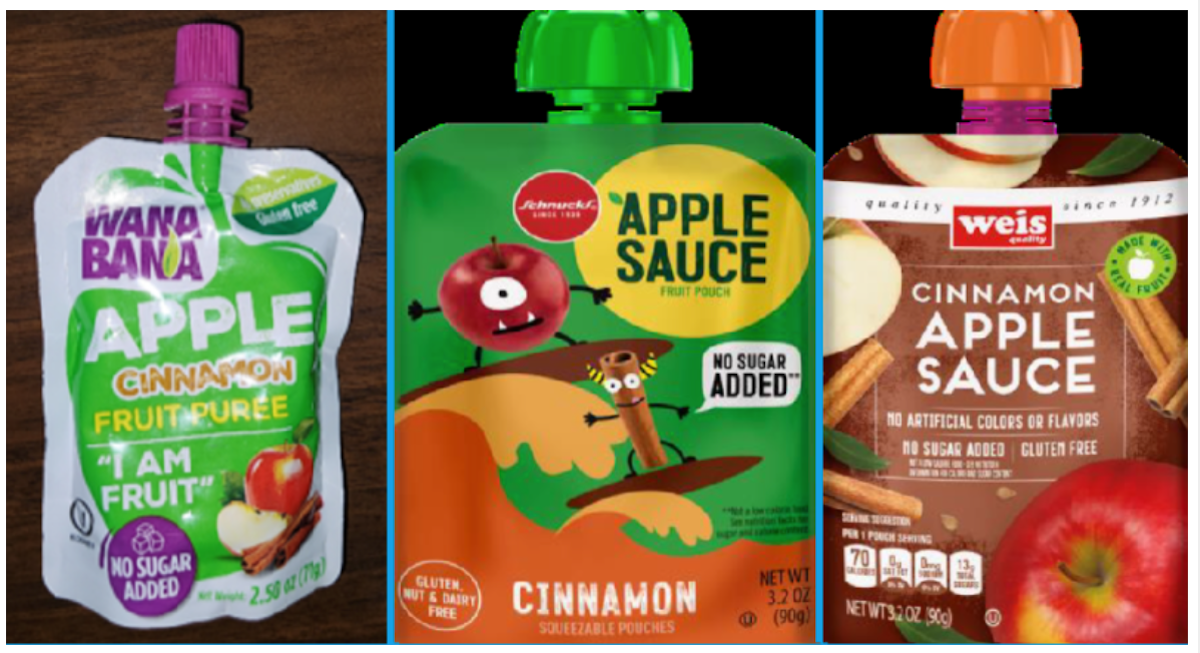
–OPINION —
House Energy and Commerce Committee Chair Cathy McMorris Rodgers (R-WA), Ranking Member Frank Pallone Jr. (D-NJ), Subcommittee on Health Chair Brett Guthrie (R-KY) and Ranking Member Anna G. Eshoo (D-CA), and Subcommittee on Oversight and Investigations Chair Morgan Griffith (R-VA) and Ranking Member Kathy Castor (D-FL) wrote to Food and Drug Administration Commissioner Robert Califf to request a briefing regarding the possible intentional contamination of applesauce pouches.
BACKGROUND:
- On Nov. 9, 2023, the FDA announced that WanaBana USA had voluntarily recalled three applesauce brands—Weis, WanaBana, and Schnucks—“due to reports of elevated levels of lead.” Subsequently, on January 5, 2024, the FDA announced that its testing of the applesauce pouches and cinnamon collected from the manufacturing facilitiy had also found chromium. applesauce
- In a statement, the FDA’s Deputy Commissioner for Human Foods, Jim Jones, indicated that recent lead contamination in applesauce pouches may have been an intentional, economically motivated act by a foreign supplier of cinnamon for the recalled products.
- As of Jan. 8, 2024, the FDA had received 87 confirmed complaints/adverse event reports linked to the recalled product.
- The Centers for Disease Control and Prevention (CDC) reported a total of 321 cases from 38 different states.
- Of those 321 cases, reports suggest more than 60 children under the age of six in the United States have tested positive for lead poisoning.
- Children in this age range are more susceptible to lead poisoning, which makes the Committee’s concerns about intentional product adulteration along the global supply chain particularly urgent.
KEY LETTER EXCERPT:
“Though the FDA has in the past elevated concerns about unacceptably high levels of lead in some baby food, recent events raise whether more can be done to prevent and detect illicit food contamination. Therefore, the Committee urgently requests a detailed briefing on the FDA’s suspicion of intentional lead contamination in applesauce pouches, particularly the steps undertaken for its investigation and measures for future prevention. It is crucial to understand the FDA’s strategies for detecting and addressing intentional contamination in the food supply chain given the limited authority your agency has over contaminated cinnamon from abroad, which was identified as the potential source of this issue.”
The bipartisan Committee leaders requested a briefing no later than February 2, 2024, and requested that the following topics should be covered:
- A timeline of events leading to the discovery of lead contamination in the three applesauce brands listed above.
- How did the FDA determine that the adulteration of raw cinnamon may have been intentional?
- How is the FDA collaborating with international partners, particularly Ecuadorian authorities, to investigate this issue thoroughly?
- How is the FDA collaborating with domestic partners, including state departments of health, to investigate this issue thoroughly?
- What steps have been taken to determine if other foods have been contaminated as a result of this supply chain vulnerability?
- How, if at all, does the FDA’s process for detecting lead contamination in food products differ for foods produced domestically from food produced abroad?
- Since 2020, what has the FDA done to identify lead-contaminated foods and prevent them from reaching shelves?
- Since 2020, how many recalls has the FDA issued related to lead contaminated foods? Of those, please specify how many were related to contamination products manufactured in America and how many were related to contamination abroad.
- What are the FDA’s capabilities within its existing authorities to enhance monitoring and inspection processes to better detect and prevent intentional acts of lead contamination along the supply chain, including internationally, and what plans does the FDA have to use those authorities?
- What additional resources or authorities are needed to better detect and prevent intentional acts of lead contamination along the supply chain, including along international supply chains?
- Will the FDA commit to providing the Committee with rolling updates on the status of the investigation, including findings related to the suspected international contamination?
CLICK HERE to read the full letter.
(To sign up for a free subscription to Food Safety News,click here)